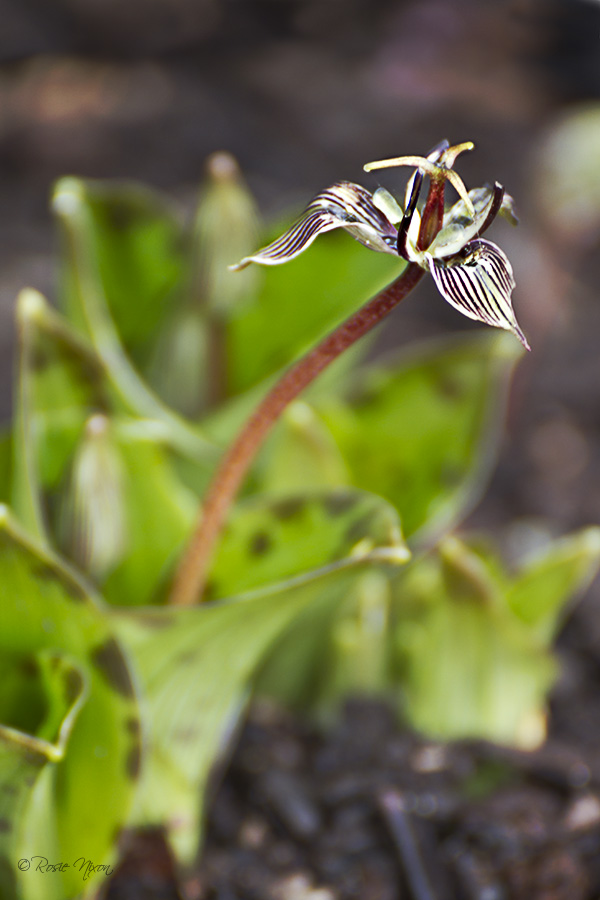 |
| Scoliopus bigelowii | Oregon Fetid Adder’s Tongue |
Scoliopus bigelowii
a ‘connoisseurs plant’ which means that you are either mad, sad or both to want to grow it.
Hmmn makes you kinda wonder why my friend thinks this is the plant for me. Is he trying to tell me something!
The plant label says that its a North American woodland bulbous perennial. It’s closely related to the trillium and is part of the Lilly family. Its supposed to have a slight scent but so far I am unaware of any. The name Scoliopus means crooked foot, from the curving pedicel/stalk of the flower.
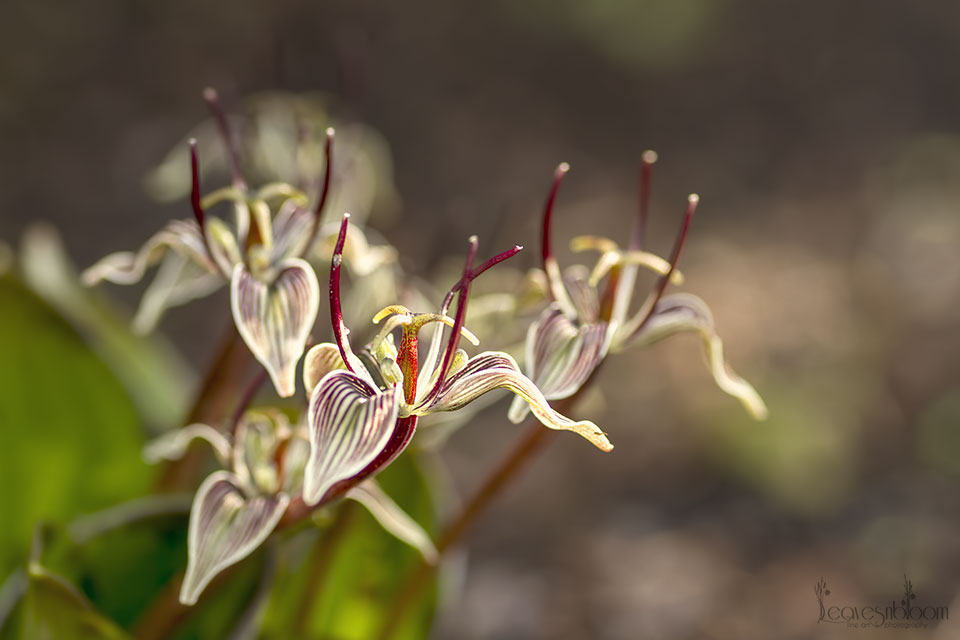 |
| Oregon Fetid Adder’s Tongue |
Slink Pod
The seed pod swells and the flower parts fall off once the flower has been pollinated.
The weight of the growing pod causes the slender stalk to bend over and touch the ground and this characteristic has given it the name “slink pod”.
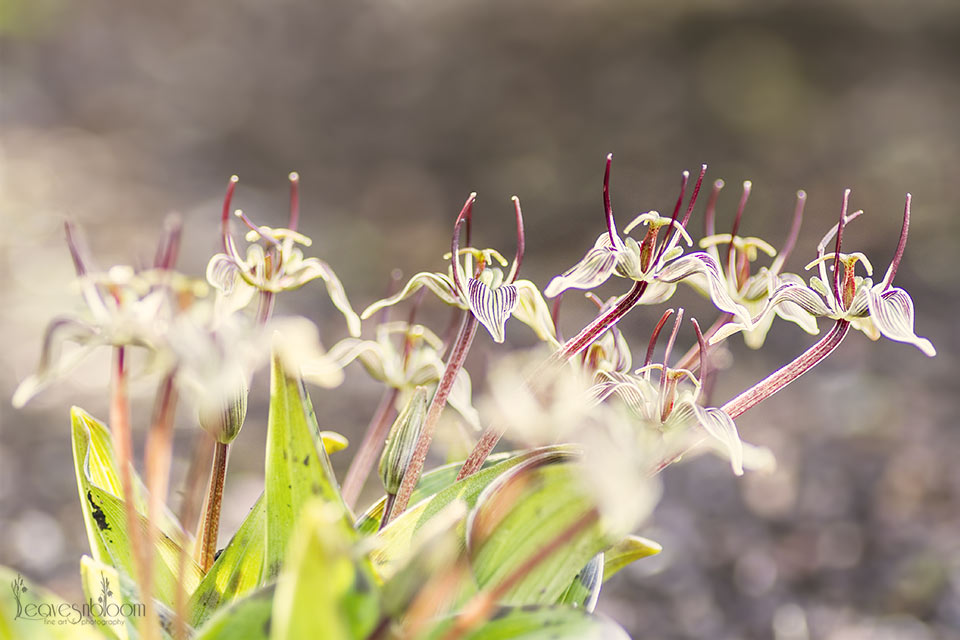 |
| Scoliopus bigelowii |
It requires humus rich moist well drained soil in shade and thankfully I can provide it with all those conditions. I used to moan about part of my garden being so wet and shady. But I must admit having an area like that does have its advantages. Especially when it comes to planting something different from everyone else.


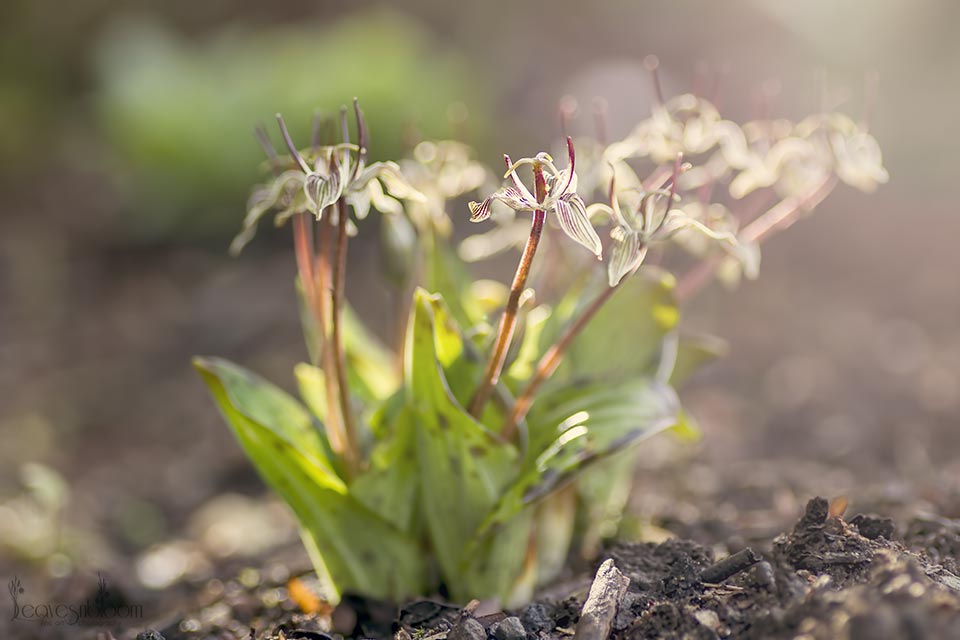
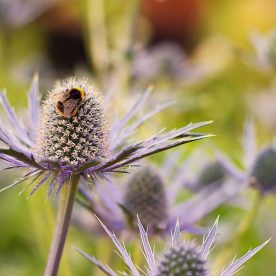
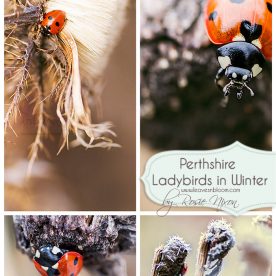
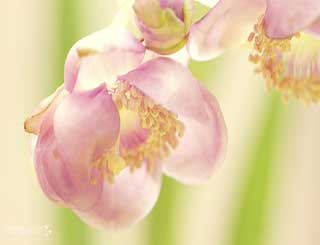
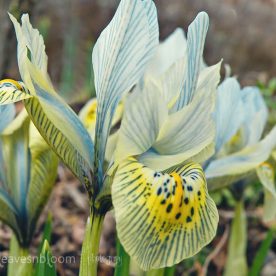
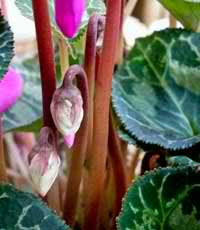
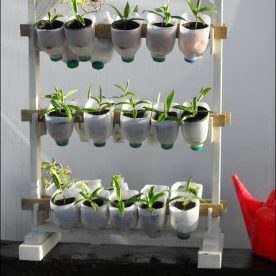
Edith Hope
Dear Rosie, What a beautiful plant and what a generous gift which I am sure will be in very good hands. You clearly already know all that will be required in the way of cultivation so I am sure that it will succeed with you.
Wonderful to have experienced the woodpecker, dreadful to have been a recipient of the other misfortune! But best news of all is that you are no longer on flood alert. I am so relieved about this.
noel
aloha my friend,
what a beautiful flower and your photo macro is spectacular…sorry to say i don't know to much but you already gave me alot of information on this plant, looks like it would do very well in your environment also…thanks for sharing that and the surprise woodpecker
debsgarden
That is an odd little flower. I am not familiar with it, but I love it's name! You do a service to it with your photography, for now we who never knew can appreciate it.
Meredith
Rosie, I'd trust you with the most difficult of plants. You take such good care of everything and pay attention to all of the fine details of how a plant likes to be treated. I bet that Oregon Fetid Adder's Tongue is going to thrive. 🙂
I'm so glad you got to hear a woodpecker today for the first time! I love their various tappings. We got to see an enormous mated pair, both with bright red heads, at my sister's woodland garden over the Easter holiday. Perhaps that was enough of a gift from Nature to make up for the other less pleasant surprise this a.m. — which I believe you dealt with beautifully, thinking to use dew-wet leaves.
jodi (bloomingwriter)
I am glad the floodwatch has passed, Rosie. So sorry about the bird offering, but on the other hand, the little Scoliopus is a delight. It's totally new to me, and I'm quite intrigued by it.
EG Wow
I have never seen this plant before (that I remember, at least(. It looks so delicate. Your friend sounds like a lovely person to share it with you. I'm going to Google the name to find out more about it. 🙂
Melanie
Oh I'm so glad the flood waters have subsided. It's good to read that you too hang your washing out on a line, just like I do 🙂 That flower is lovely and your photos of it are fabulous. I'm sorry to say I hadn't heard of it until I read your post so I can't offer you a replacement 🙂 but I'm sure your won't need it anyway.
keewee
Rosie, that sure is an unusual little flower. I am rather fond of the unusual.
Bangchik
For the seed pod bending so low and kissing the ground, probably indicate the natural way propagation… ~bangchik
fairegarden
Hi Rosie, I am glad you are out of flood danger, but it does sound as though your wet garden is the perfect spot for your new gift. And what a gift it is! I have never heard of this, must not be from this part of North America. What a good friend to have, with a rare plant collection and all. You did him proud with those macro shots. How interesting how the stems go down, self seeding? We have so many woodpeckers, we don't think anything about hearing them. You must be thrilled, it is quite a sound, unless they are drilling on your house! 🙂
Frances
Greyscale Territory
A strange and stunning little flower! At first I thought that it was a kind of tiger lily, but more fragile! Certainly fascinating!
Carolyn Ford
Very interesting little flower! I love the bokeh in these photos, as well as your stunning captures of the flower!
maiaT
Lovely little flower Rosie and you took the time to provide all necessary info for it. Nice post.
It is very difficult to capture such a tiny thing. I don't remember seeing it before but at this size it is easy to overlook it.
Have a nice weekend!
Mumsy
That is so very delicate looking and pretty flower, Rosie! It reminds me of some types of orchid that I saw at the Conservatory here..Thanks for the information also..
Di
Rosie, I am not aware of your new lovely plant, Scoliopus Hallii, but we do have a beautiful 'wildflower' which naturalizes on our hillside, Erythronium oregonum (Trout lily), a genus also in the Liliaceae family and about which I wrote this past week. They appear to have much similarity. Rosie, hope all is well.
Beverley Baird
I've never seen this little plant. Very delicate! Great shots!And a lot of interestng info on it!
amatterofhowyouseeit.com
What a sweet little blossom!
Curbstone Valley Farm
Rosie, so glad to hear you're no longer on flood watch. I love your article on Scoliopus Hallii. We have a similar plant here, native to California, Scoliopus bigelovii. It is supposed to grow wild here, although I have yet to see any blooming on the property…but I keep looking, hoping that someday I'll find one, as it has the most beautiful markings on the petals. I may not be able to replace yours should something happen to it…but might be able to offer an interesting alternate…assuming I can find one here of course!
Quilt Works
Very neat flowers – so delicate and new! Great angle too. i really enjoyed them.
…my favorite tulip
Unknown
I have never encountered Scoliopus hallii, but in my area of coastal northern california we have Scoliopus bigelovii in the wet understories of redwood forests. S. bigelovii has larger somewhat more spectacular flowers, and a strongly unpleasant musty rotten smell. It is pollinated by fungus gnats, which come to mate and lay eggs on it (presumably they think it smells like delicious rotten fungus), and the seeds are distributed by ants, who remove a little nutritious bit of the seed called an elaiosome and discard the rest, where it germinates in their rubbish pile.
Since you say S. hallii doesn't have much of a smell, I wonder if it might have different pollinators. Or perhaps the scent is just less detectable to humans, but the fungus gnats find it all the same?